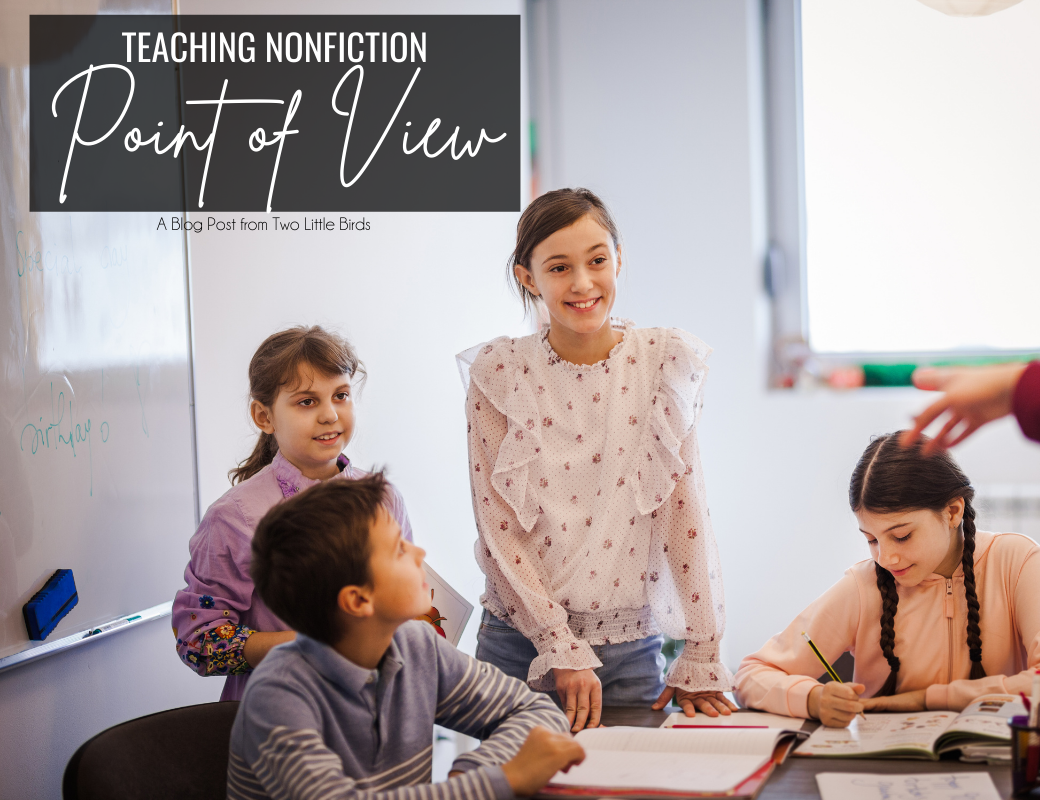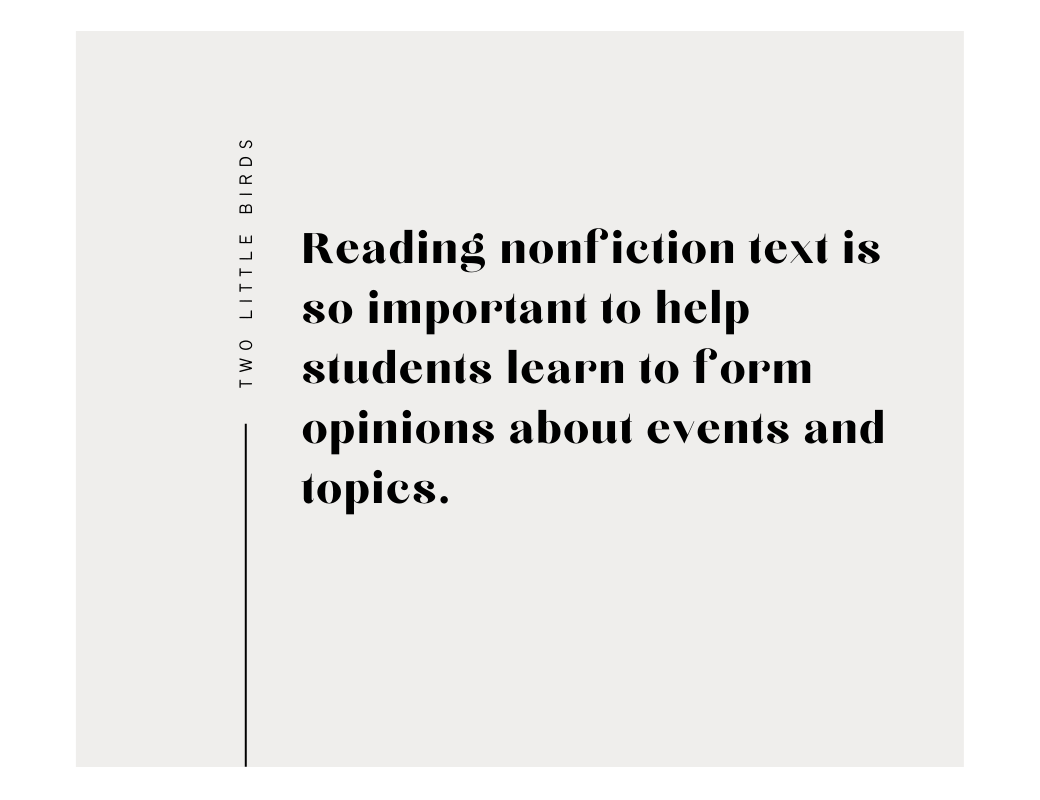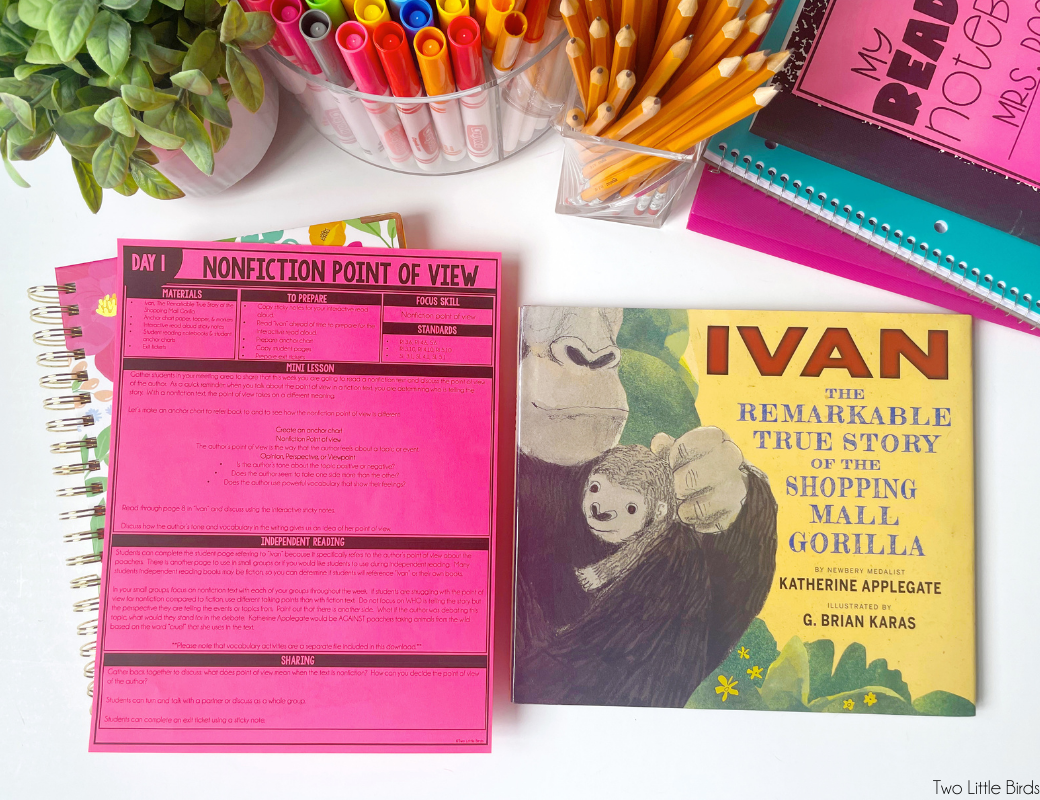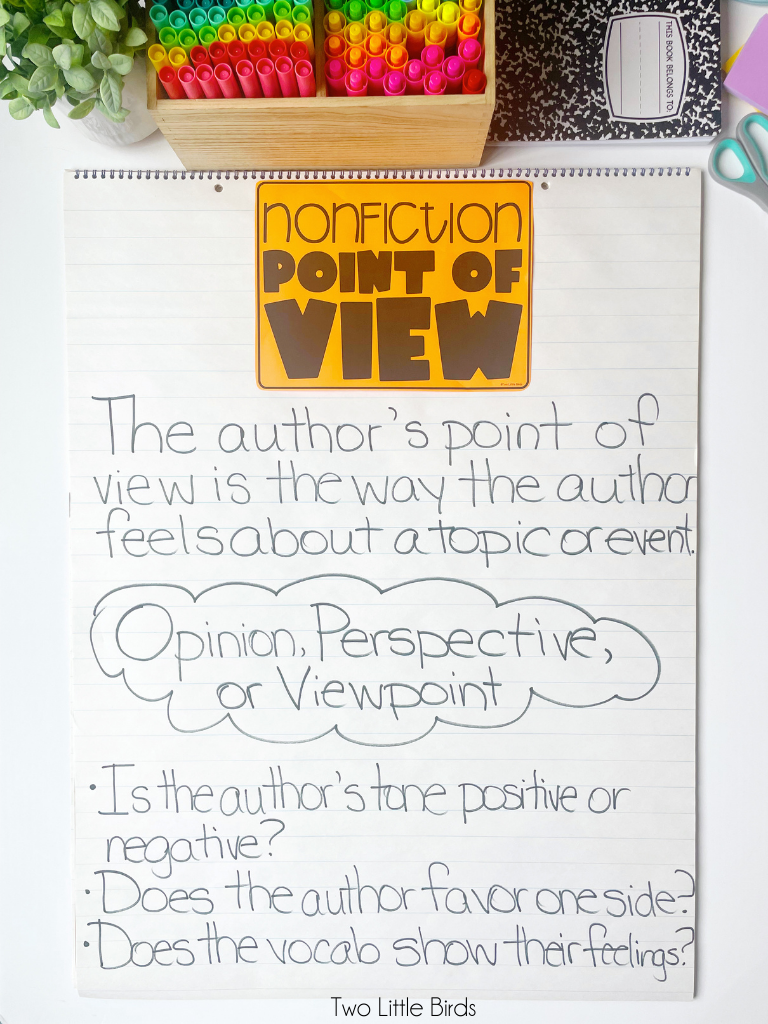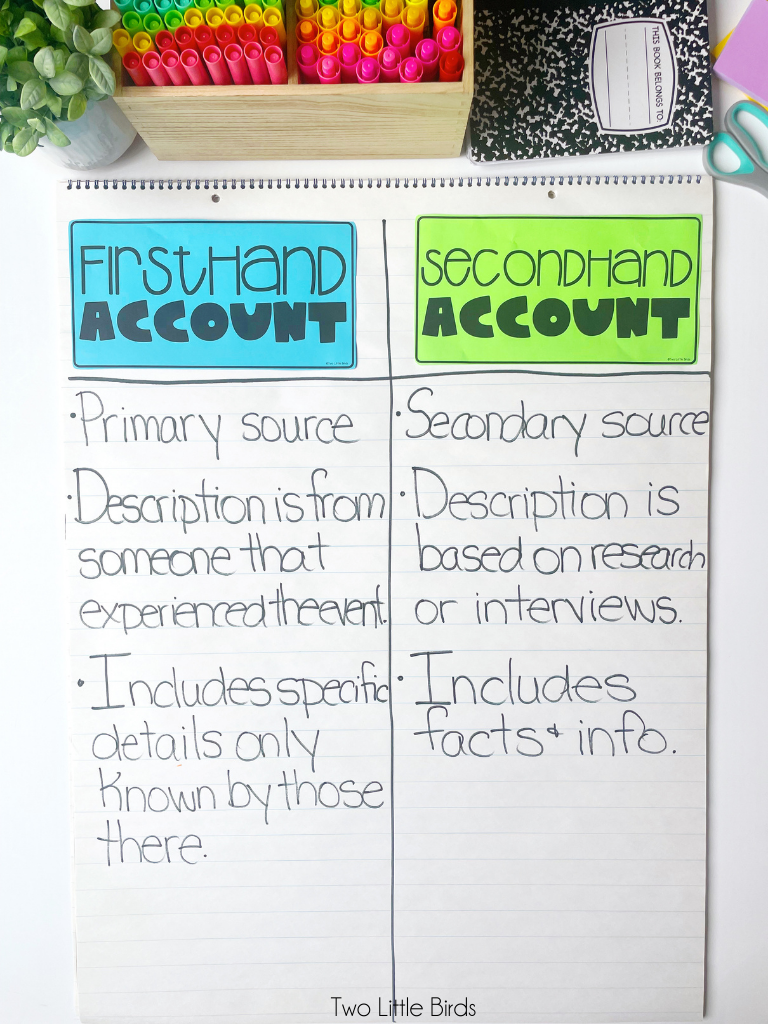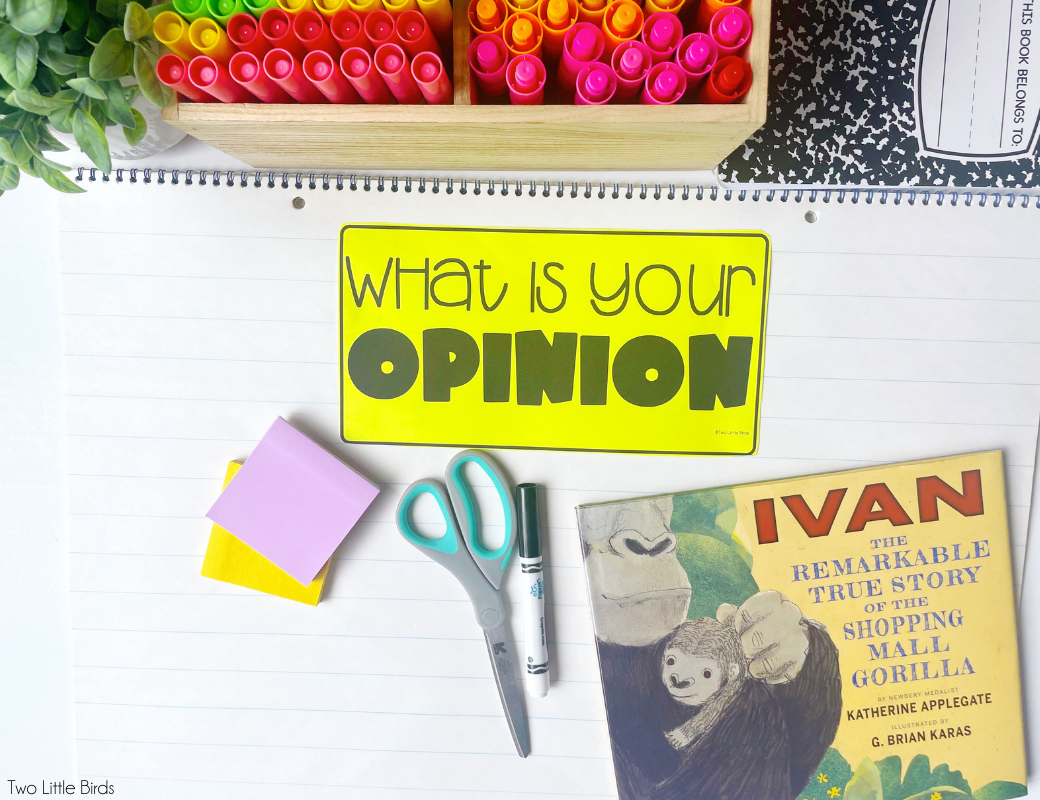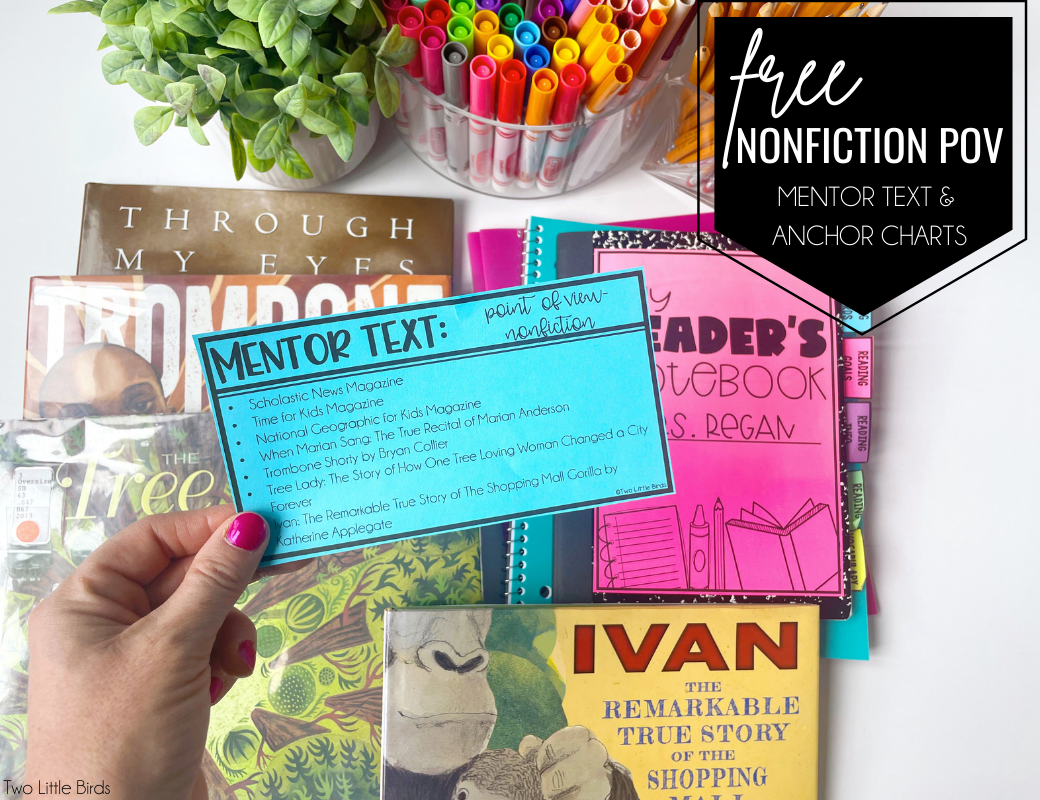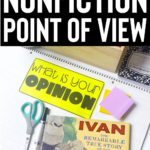Teaching the point of view in a nonfiction text can be a tricky task; it is not as clear-cut as the point of view in a fictional story. The point of view in a nonfiction text is the way that the author feels about the topic or event. It goes beyond PIE (persuade, inform, entertain)- the author’s purpose that students know and LOVE and beyond the first or third person narrators of fictional points of view.
Exploring the point of view in nonfiction texts can be a difficult task for students because some texts may have an obvious point of view while others do not. The standards state that students must be able to distinguish their own point of view from the author’s. This means that students must be able to define and identify the point of view but also explain how their views compare to the author. So, teaching a nonfiction point of view becomes a multi-faceted skill that may take students some time to dig deep into.
As you break down the skills associated with nonfiction point of view, students will be able to carefully analyze and determine the author’s point of view and perspective.
Here are some strategies for students as they determine the author’s point of view:
- Determine if the text is a firsthand account or a secondhand account of the events.
- Notice the words that the author uses to help determine how the author feels about the topic and use that feeling to determine the point of view.
- Read more than one text about the topic to recognize different points of view.
- Pay attention to numbers, facts, or statistics in the text. When you carefully look at the data that is shared by the author, you may better understand their perspective.
Using mentor text to teach nonfiction point of view:
“Ivan the Remarkable True Story of the Shopping Mall Gorilla” by Katherine Applegate is such a beautiful story and is a great book to use as a mentor text while teaching nonfiction point of view. It is an amazing story of Ivan, the gorilla that lived in a shopping mall, and because it was a true story that happened in the fairly recent future, it is easy to find multiple accounts of the story. There are also many news clips about Ivan too.
3 anchor charts to teach nonfiction point of view
As you are teaching nonfiction point of view, creating anchor charts during your mini-lessons can be a helpful tool that will serve as a reference for students during their independent reading time. Here are a few anchor charts and topics to consider as you are planning your nonfiction point of view mini-lessons.
1. Opinion, Perspective, Viewpoint:
The tone the author uses in the story can help determine their point of view. You can help students determine the author’s opinions, the perspective they are giving, and their viewpoint on the topic by carefully looking at the language and tone the author uses.
Create an anchor chart and discuss with your students:
2. Firsthand and Secondhand Accounts:
Reading more than one account of the story can help students form their own opinions. In the case of Ivan, you can read and watch videos that are firsthand accounts from his trainers and zookeepers. When students are reading nonfiction texts that cover real events, they are able to take in information from different sources. Being exposed to different sources helps students to become more informed and also allows students to form their own opinions, without influence from just one author.
Create an anchor chart and discuss with your students:
3. Determining Your Own Opinion:
Reading different texts, watching videos, and hearing from multiple sources helps students form opinions of their own about a topic or event. Everyone may have different opinions, your student’s perspectives may be different from that of the author and even from each other, but the importance of reading multiple accounts of a nonfiction topic is to help students form their own opinions.
Have each student write down a quick thought about their opinion on Ivan’s life in captivity (or thoughts on the nonfiction topic that you have chosen). Create an anchor chart and have students stick their notes to the anchor chart. Discuss opinions and share your own, “How do you feel about Ivan being taken from his home and living in captivity?”
Your students will love reading about Ivan and his story, and if you are able to find copies of “The One and Only Ivan,” it is a great opportunity to compare fiction to nonfiction text.
If students are having difficulty with nonfiction point of view, try the following prompts:
- When the author said _________ it makes me think they believe…
- The author is trying to make the point that… Support with evidence from the text.
- The author does not say anything about __________, so I wonder…
- The photographs in the text make the reader think…so I think the author’s point of view may be…
- The author uses words such as __________ which tells me they feel…
Reading nonfiction text is so important to help students learn to form opinions about events and topics. I hope you found some great ideas for teaching nonfiction point of view in your classroom!
Check out the resources featured in this post:
-
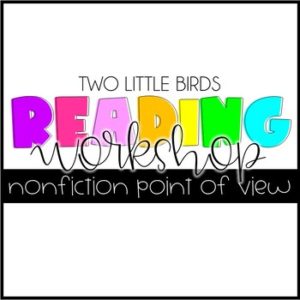 Reader’s Workshop: Teaching Nonfiction Point of View$5.00
Reader’s Workshop: Teaching Nonfiction Point of View$5.00 -
Product on sale
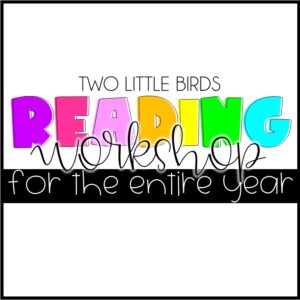 Reader’s Workshop | Reading Comprehension Skills, Lessons, Reader's NotebooksOriginal price was: $151.75.$76.00Current price is: $76.00.
Reader’s Workshop | Reading Comprehension Skills, Lessons, Reader's NotebooksOriginal price was: $151.75.$76.00Current price is: $76.00.

